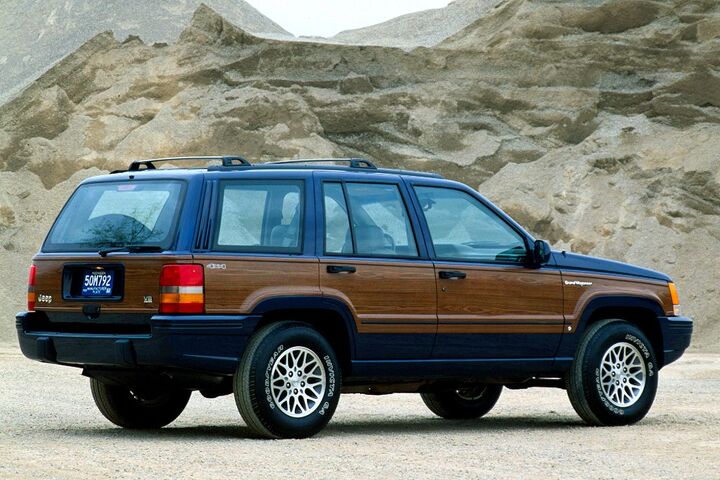QOTD: Which Cars Failed to Meet the OEM's Hype?

Back in December, Matthew Guy penned an interesting QOTD post soliciting your picks for the most outrageous new car introduction. In the case of the new-for-1993 Jeep Grand Cherokee, Bob Lutz drove Chrysler’s new (and important) SUV up a set of stairs at Cobo Hall and through a plate glass window. History revealed the hype to be justified: the Grand Cherokee became an instant success, finding its way into suburban middle-class driveways across America.
Sometimes, though, the new product doesn’t live up to the manufacturer’s hype before introduction. Let’s talk disappointment.
Hold on, that’s not the disappointing bit — it’s the thing that created the subsequent disappointment years later. As your heart rate settles back down, let me explain. Honda wanted to bring a new sporty car to the market for 2011.
The idea behind said new vehicle was very promising, and very simple. Honda wanted to resurrect the ever-desirable CR-X (1984-1991) into a brand new two-seat hatchback. The key characteristics from the original CR-X were on order for this new vehicle. Honda’s CEO himself said the new CR-Z was to be sporty, incredibly efficient, and inexpensive.
Displayed all the way back in 2007 at the Tokyo Motor Show, Honda was keen to explain that CR-Z stood for “Compact Renaissance Zero.” The Renaissance part was capturing the spirit of the original CR-X. The concept looked promising.
What was delivered for the 2011 model year was not. A 1.5-liter inline-four engine and an electric motor powered the (hybrid only) CR-Z, making a combined 122 horsepower. Though it was small, the hatchback weighed 2,670 pounds with a manual transmission. For reference, the second generation CR-X Si weighed 2,103 pounds, and had a 1.6-liter VTEC engine producing 108 horsepower.
Paired with a six-speed manual transmission or a CVT, the CR-Z qualified as a Partial Zero Emissions Vehicle (PZEV), managing a 31 mpg/37 mpg fuel economy rating when equipped with the manual. Marginal efficiency for a hybrid.
The inexpensive part was sort of forgotten, too. The CR-Z cost between $19,000 and around $24,000 in 2011, where the CR-X Si topped out at $11,000 in 1991 ($20,146 inflation adjusted).
And that most important quality, the “sporty?” Well, it wasn’t really there. Media outlets were generally unimpressed with how the CR-Z drove. Car and Driver reported the CR-Z was “…not terribly fun to drive,” and cited the Accord Hybrid’s superior fuel economy and much larger size.
Public opinion matched the car mags, and the CR-Z was short-lived — killed off after the 2016 model year to make room for the upcoming Clarity and Accord Hybrid models.
What’s your pick for a new car which just didn’t live up to the OEM hype?
[Images: Fiat Chrysler Automobiles, Honda]

Interested in lots of cars and their various historical contexts. Started writing articles for TTAC in late 2016, when my first posts were QOTDs. From there I started a few new series like Rare Rides, Buy/Drive/Burn, Abandoned History, and most recently Rare Rides Icons. Operating from a home base in Cincinnati, Ohio, a relative auto journalist dead zone. Many of my articles are prompted by something I'll see on social media that sparks my interest and causes me to research. Finding articles and information from the early days of the internet and beyond that covers the little details lost to time: trim packages, color and wheel choices, interior fabrics. Beyond those, I'm fascinated by automotive industry experiments, both failures and successes. Lately I've taken an interest in AI, and generating "what if" type images for car models long dead. Reincarnating a modern Toyota Paseo, Lincoln Mark IX, or Isuzu Trooper through a text prompt is fun. Fun to post them on Twitter too, and watch people overreact. To that end, the social media I use most is Twitter, @CoreyLewis86. I also contribute pieces for Forbes Wheels and Forbes Home.
More by Corey Lewis
Latest Car Reviews
Read moreLatest Product Reviews
Read moreRecent Comments
- Analoggrotto Ford wishes it could be Hyundai Kia Genesis.
- John I used to have a 2016 Chevy Spark EV (leased, 85 miles range when new) as our family's 3rd car. Loved it. When the lease ended the only cheap EV was the bolt but I couldn't stomach the tuperware interior so I bought a used Cayman instead and have been waiting now for another a cheap EV for almost 5 years. My bigger problem would be that I dislike giving Elon Musk even more $$, but the tesla supercharger network makes long trips (within CA at least) an option.
- SCE to AUX "...it’s unclear how Ford plans to reach profitability with cheaper vehicles, as it’s slowed investments in new factories and other related areas"Exactly. They need to show us their Gigafactories that will support the high-demand affordable EV volume.
- 1995 SC I have a "Hooptie" EV. Affordable would be a step up.
- Buickman if they name it "Recall" there will already be Brand Awareness!








































Comments
Join the conversation
I'm going to say the C-Max. It was supposed to be Ford's "Prius Fighter", but once people realized the 2013 C-Max didn't get anywhere close to the 47/47 rating, Ford had to admit that they cheated on the fuel economy numbers and give owners of the original units compensation. The rest is history. Ford has relegated it to red headed step-child status and barely admits that they exist. But they still are in production for a little while longer. As a result, they're dirt cheap used, along with the Volt.
Lincoln LS.